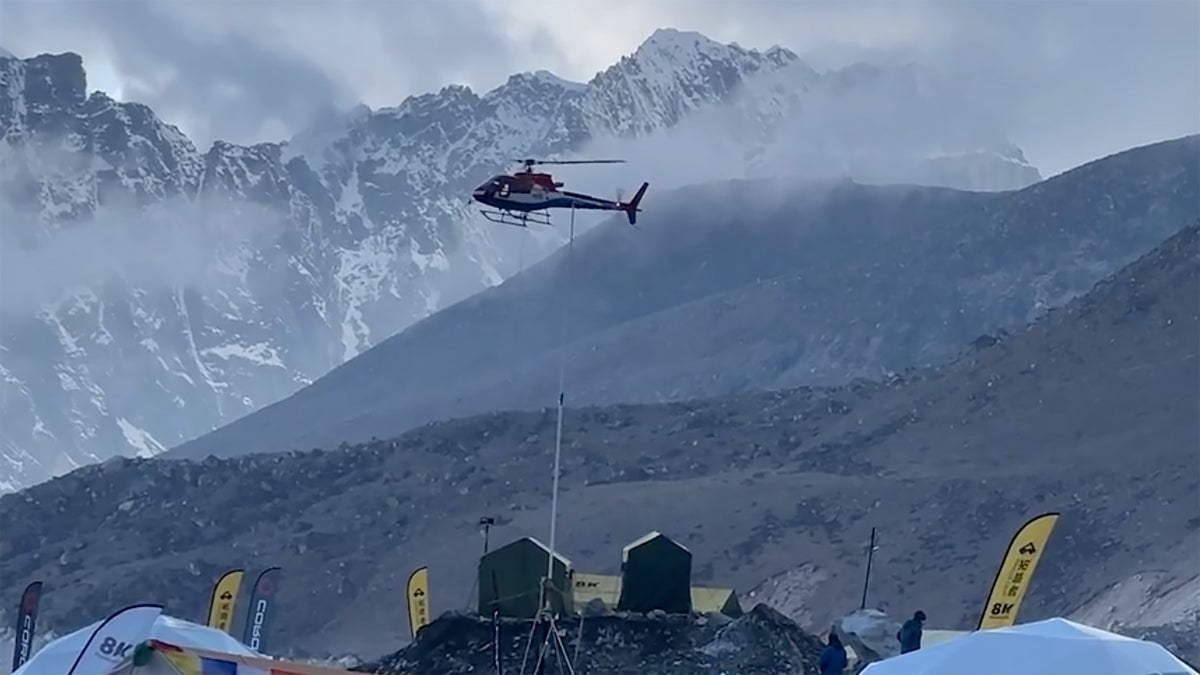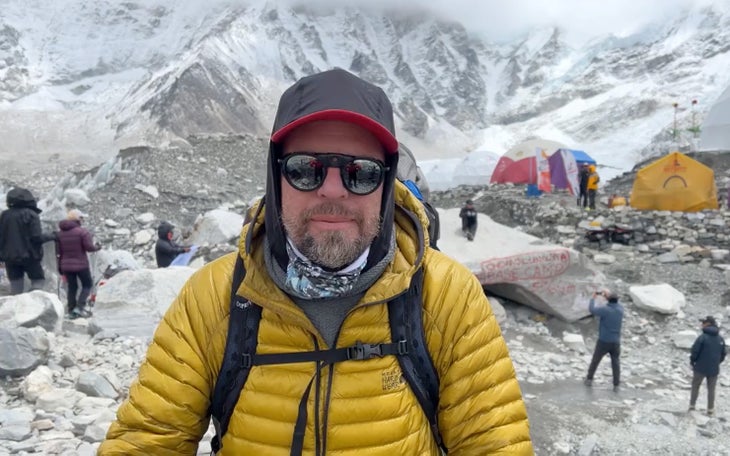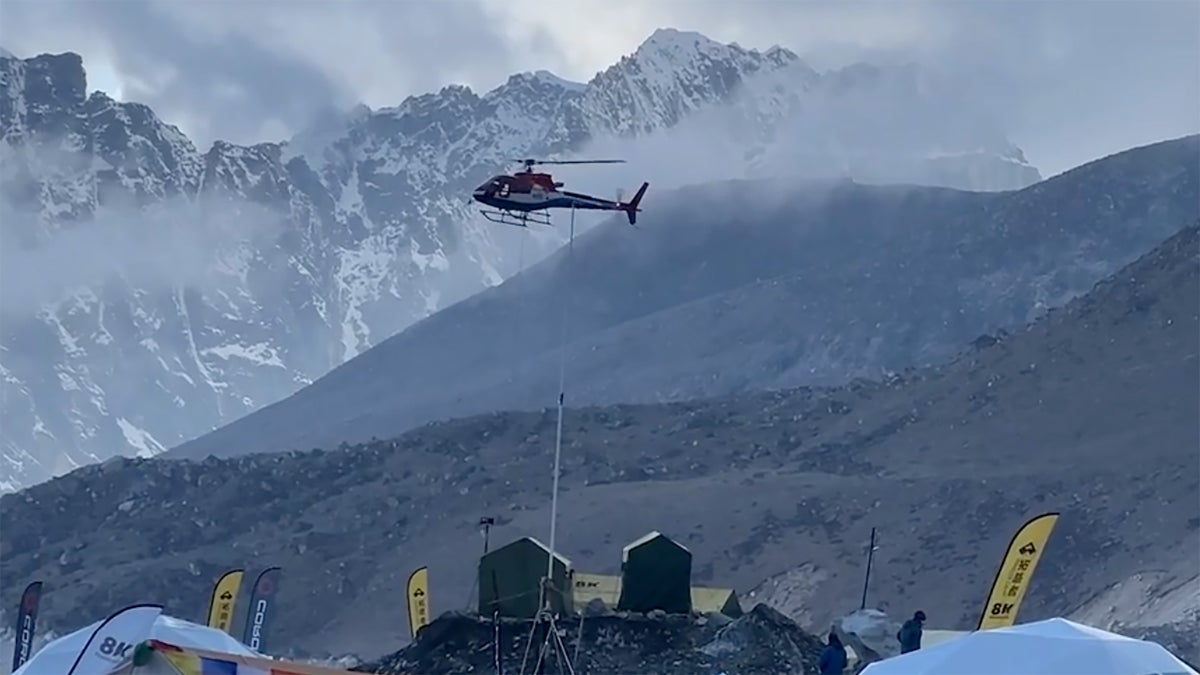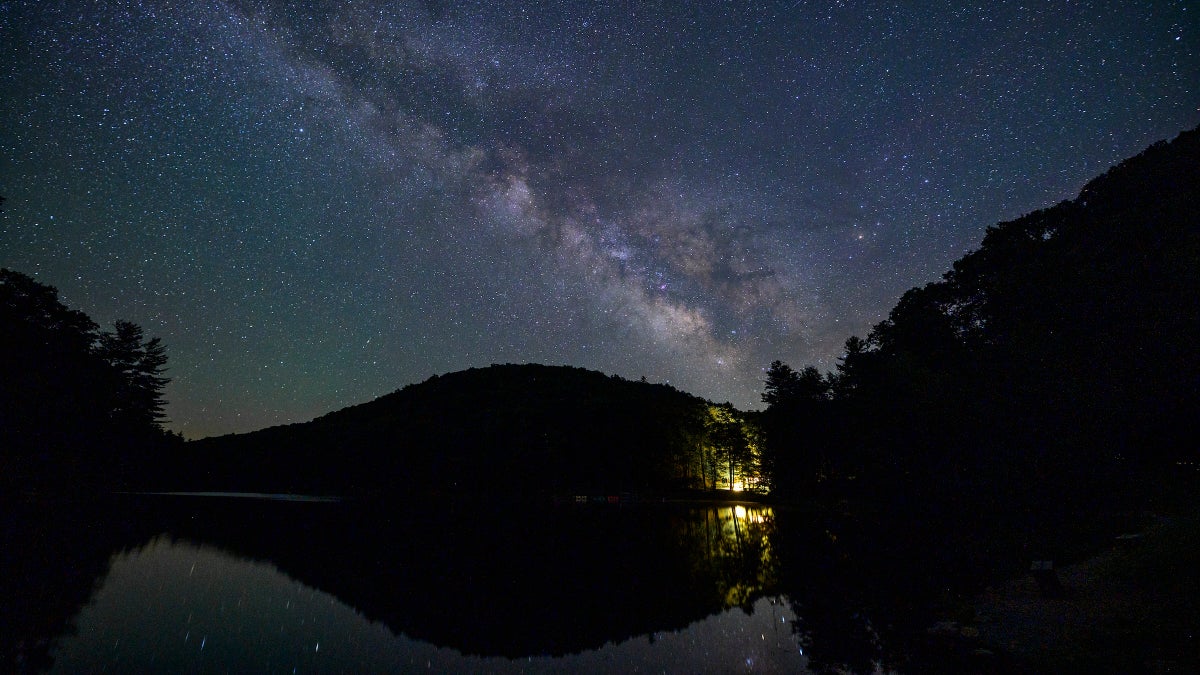
Rescuers and expedition operators in Base Camp buzzed with enthusiasm on the evening of Wednesday, May 14 after a helicopter pilot executed a daring rescue high on the slopes of Mount Everest.
The drama began at approximately 6:45 A.M. after a sizable early wave of climbers reached the summit and began to descend. Clear skies on the peak gave way to clouds and wind as the group made its way down. A Czech climber who was part of the ascent led by expedition operator 8K Expeditions began to show signs of altitude sickness on the descent, a company representative told Outside.
The climber, whose identity was not shared, was able to make his way down from the summit to Camp III at 24,000 feet elevation, but he was unable to continue. Lhakpa Sherpa, director of 8K Expeditions, told Outside that the company called for a helicopter rescue at approximately 4 P.M.
Kailash Helicopters, a transport company in Kathmandu, sent Italian pilot Maurizio Folini to attempt the rescue.
“Maurizio is the best pilot for this kind of rescue in the world,” Lhakpa Sherpa said. “He’s an Everest summitter and an IFMGA guide.”
Sources with the Sagarmatha Pollution Control Committee, a local non-profit that helped manage the Everest route, confirmed details of the rescue with Outside.
Folini piloted an Airbus AS350 B3e helicopter equipped with a long-line winch system. The helicopter flew from Kathmandu to Lukla, where Folini took over and began flying toward Everest.
As the helicopter was en-route, the Czech climber’s condition worsened, Lhakpa Sherpa said.
“We received reports that he was unconscious for a full ten minutes,” Lhakpa Sherpa said. “Our teams gave him CPR, and he regained consciousness.”
Camp III is located halfway up the steep Lhotse Face, an imposing wall of rock and ice that ascends nearly for nearly 3,700 vertical feet. It’s the last camp that climbers reach before entering the so-called “Death Zone” at 26,000 feet.
The camp’s elevation near the limits of the high-altitude helicopters flown in the Himalayas. Piloting a helicopter in the Himalayas is a harrowing job—violent weather systems can appear without warning, and the thin air at extreme altitude creates less lift than air at sea level. There’s no room for pilot error.
At 5:30 P.M. Folini’s helicopter flew over Everest Base Camp and made its way up the Khumbu Icefall toward Camp III trailing a rescue rope, or a long line, below the aircraft. After making a pass of the landing zone, Folini hovered over the Camp.
Nepali laws forbid helicopter pilots from landing on Mount Everest. In Base Camp, a ground crew comprised of officials from the Himalayan Rescue Association, Sagarmatha Pollution Control Committee, and 8K Expeditions called Nepal’s Civil Aviation Authority and requested permission to complete the mission.
Officials told Outside that the group received the go-ahead, and radioed Folini to proceed. As he hovered, rescuers at Camp III secured the Czech climber to the long line, and Folini then flew the patient, dangling beneath the helicopter, back to Base Camp, where a team of emergency doctors was waiting in the Everest Emergency Room operated by the Himalayan Rescue Association.
“We were very lucky today,” Lhakpa Sherpa said. “The doctors said his entire chest was swollen. He would not have survived the night.”
Officials told Outside that the Czech climber was diagnosed with severe pulmonary edema and needed to be taken to lower elevation. After Folini landed his helicopter at Base Camp, crews loaded the Czech climber into the craft and he departed for the town of Lukla in the foothills of the Himalayas.
The rescue was the focal point of a busy day on Mount Everest. Amid a window of good weather, approximately 40 climbers from two different companies reached the summit. Officials told Outside that another rescue occurred later in the day after a climbing sherpa slipped and fell on the Lhotse Face. The man survived, officials said.
Hundreds more are either still in Base Camp waiting for better weather, or are at lower camps on their way to the top.
Want to stay up on Outside’s 2025 Everest Season coverage? Sign up for our Outside: Dispatches from Everest newsletter.

Ben Ayers is a filmmaker, journalist, and adventurer who splits his time between Vermont and Nepal. In 2022 and 2024, he chronicled the Mount Everest climbing season for Outside.
The post There Was a Dramatic Helicopter Rescue on Mount Everest appeared first on Outside Online.















